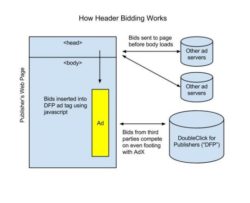Header Bidding Was Always A Workaround
 On Wednesday, Google opened up Dynamic Allocation to allow DFP customers to source demand for their inventory from outside partners and exchanges. This immediately sent waves through the industry with different players scrambling to defend header bidding, praise google, or bemoan the respective plights of publishers or advertisers.
On Wednesday, Google opened up Dynamic Allocation to allow DFP customers to source demand for their inventory from outside partners and exchanges. This immediately sent waves through the industry with different players scrambling to defend header bidding, praise google, or bemoan the respective plights of publishers or advertisers.
The Change
The truth is, anybody who didn’t see this coming really hasn’t been paying attention. This course of action from Google was not only predictable, it was certain. Dynamic Allocation has been restricted to AdX demand for some time, and header bidding was a response to that. It allowed advertisers to buy premium publisher inventory with data at scale and increased yield for publishers. Although, functionally it didn’t do so quite as efficiently as Dynamic Allocation. There are more partners to work with, code to add to the page, latency, setting up prioritization within the ad server, etc.
It’s the sort of stuff that makes a good ops team look like rock stars when executed properly (thus making it rain), but any team that good would also say to themselves, “Why can’t this demand all just run through DFP?”
Brian O’Kelley publicly predicted this convergence at the Appnexus Summit last November, when unveiling the Appnexus Publisher stack (full disclosure, Appnexus is a partner of AdDaptive), which includes native demand inherently built into the ad server. It was always the only way this would play out – the same market forces that demonstrate header bidding adds value to buyers and sellers also inexorably demands that the friction header bidding creates will be eliminated.
Case Study
We also already have a case study in this – much of the technology here is nothing new. In 2007 I was running ad ops for a group of publisher sites and we had open dynamic allocation back then. It was called Right Media and it was way ahead of its time. We ran RM as our ad server and one of our primary sources of demand. As an early stage startup group, we were still in the process of building out a sales team to go after direct budget, and this was before the rise of Pubmatic. That made Right Media a great option for sourcing demand from dozens to hundreds of partners that competed in an auction with our growing direct sales efforts. The missing piece of course in 2007 was data; we hadn’t yet reached critical mass in availability or adoption of useful data for ad targeting, and RM was never seriously viewed as a challenge to DFP, despite the advantages it conferred.
Inevitability
There were other well-known issues with RM, but that’s not relevant here, the ideas and tech for open dynamic allocation have been around for a decade. The reasons header bidding got its time in the sun are artificial – DFP controls an overwhelming percentage of the ad server market among premium publishers, and it was in their interest to restrict allocation to AdX. However, as a critical mass of publishers adopted header bidding, that advantage waned and DFP made the choice to open up allocation to preserve its market share among premium pubs, lest they be wooed by Appnexus or another partner that facilitated more liquid demand.








